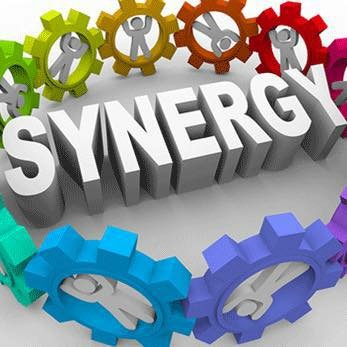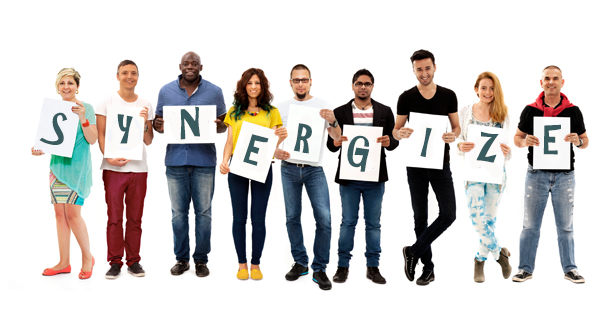I think we’ve all been there. A new directive or project comes down the pipeline and, all of a sudden, you find yourself thrown into a project team with people you’ve rarely spoken to and hardly know. You spend the first few days (or weeks…or months) feeling each other out and finding out how to work effectively with one another. You think things are going OK…until the massive blowup that derails the whole project and leaves team members licking their wounds.
How does this happen? How do we get to a place where we would rather swim with sharks or jump through flaming hoops than have to end up in another claustrophobic meeting room, staring down our co-worker while fighting urges to poison their double foam latte? (Disclaimer: I have never actually had homicidal thoughts about my co-workers – just trying to paint the picture here!)
The answer is both simple and complex: Synergy. Or lack thereof.
Synergy can be best described as the sum being better than the parts. When working in teams, what we’re really striving for is create a synergistic environment that leads to a high quality finished product. We want to make sure that we are leveraging the individual strengths of each member, celebrating the diversity of thought and experience within the group, and ensuring that the combined result of these actions goes above and beyond what any one of us could produce on our own. In order to get there, we need to create a space where these strengths and diversity are recognized and utilized. Sounds easy enough…
But what happens when, despite your [self-proclaimed] best efforts, synergy eludes us? In those cases it helps to step back and evaluate the situation honestly and objectively. That includes looking in the mirror and making sure that what you are bringing to the table measures up. Here are some questions to ask when evaluating your own performance and behavior:
Am I flexible and open to others’ viewpoints? It is really easy to put your stake in the ground when feeling strongly about a situation. It is much harder to pick it up and move it when someone else makes a point or provides new, relevant information that impacts your understanding of the situation. Be willing to listen objectively and move your stake when necessary.
Am I thinking multi-dimensionally? We’ve often heard that there’s more than one side to a story. This is as true in business as it is in hot gossip. What are you doing to consider the different sides of issues you are facing in your work group or with your project? It helps to make lists, similar to a pro/con list, as an exercise to draw out other factors or considerations that were not initially identified.
Am I comfortable with ambiguity? Working in project groups – especially with people you haven’t worked with in the past – brings a lot of ‘unknowns’. The ability to effectively work through a project with very little information is invaluable, and helps us remain flexible throughout the process. This flexibility will be welcomed by other team members who are doing their best to adapt to the challenges of group work.
Am I sensitive to the challenges of cross-cultural communication? This is especially important to consider when working with a global project team, but can often be a challenge for domestic teams as well. Macrodifferences in culture (national/political) as well as microdifferences (discipline/training) should be approached positively, and with respect for the individuals within the group. Bonus points for those that find ways to capitalize on these difference!
Am I considering the consequences of my own behavior? Clearly, poisoning someone’s latte is going to cause trouble – both personally and professionally. But to a lesser extreme, every single action that we take will have a consequence for the group, the project and ourselves. These consequences may be positive or negative, and should be thought about in advance of any action. A good rule of thumb? Before making a decision, think about whether you would want your actions displayed on the front page of the newspaper – or worse yet, shared with your mom!
There are so many things that we can do as individuals to promote synergy within our work groups. I’ve only listed a few here, but I would encourage you to read more about synergistic cultures and how to foster them. There are some great references online, and your employer may even offer training courses or workshops on the topic. Do you have any examples of how you’ve done so in the past? Or where you realized after the fact that an opportunity to create synergy was missed? Feel free to share your experiences in the comments below.
References:
Moran, R. T., Abramson, N. R., & Moran, S. V. (2014). Managing cultural differences. London: Routledge.







